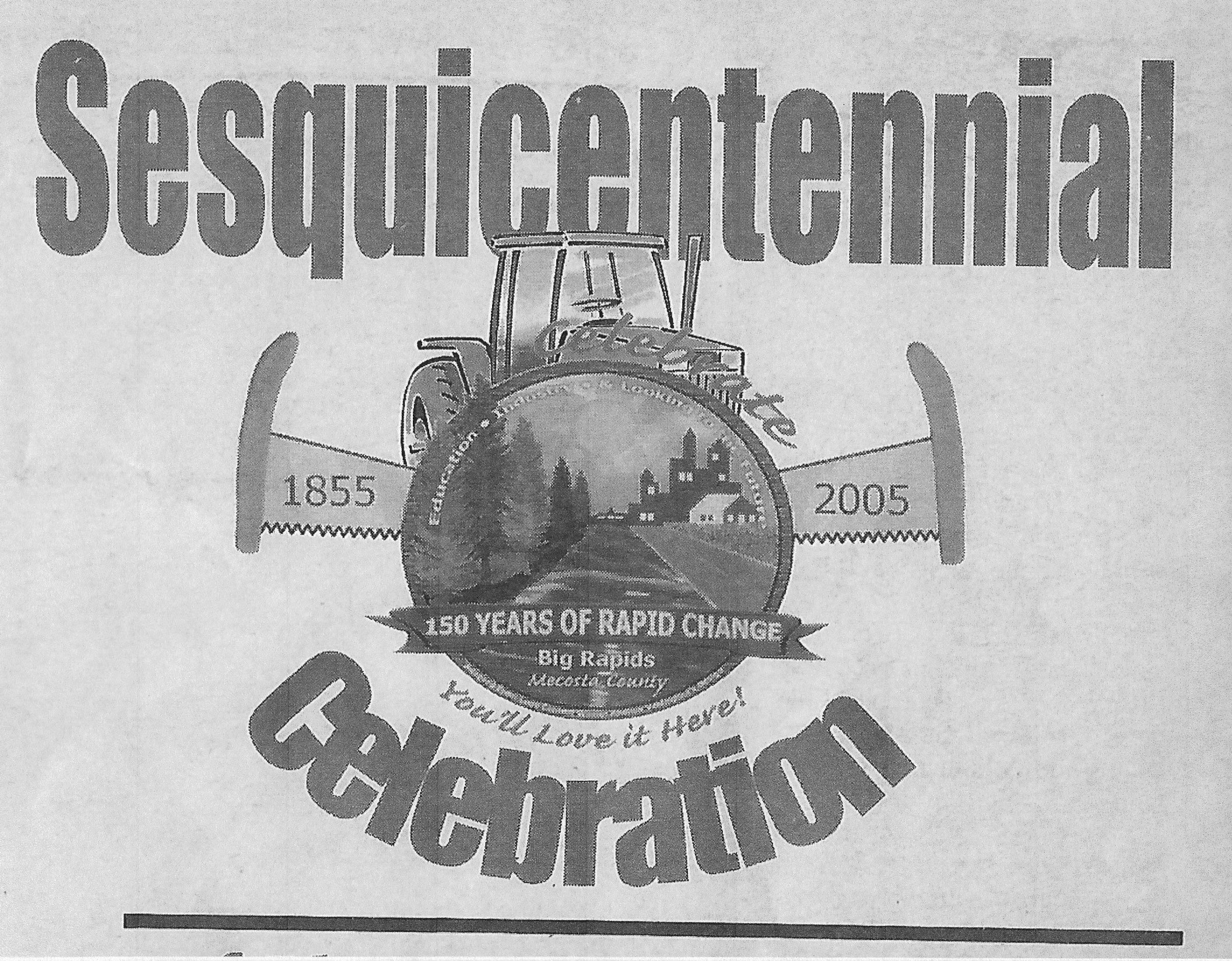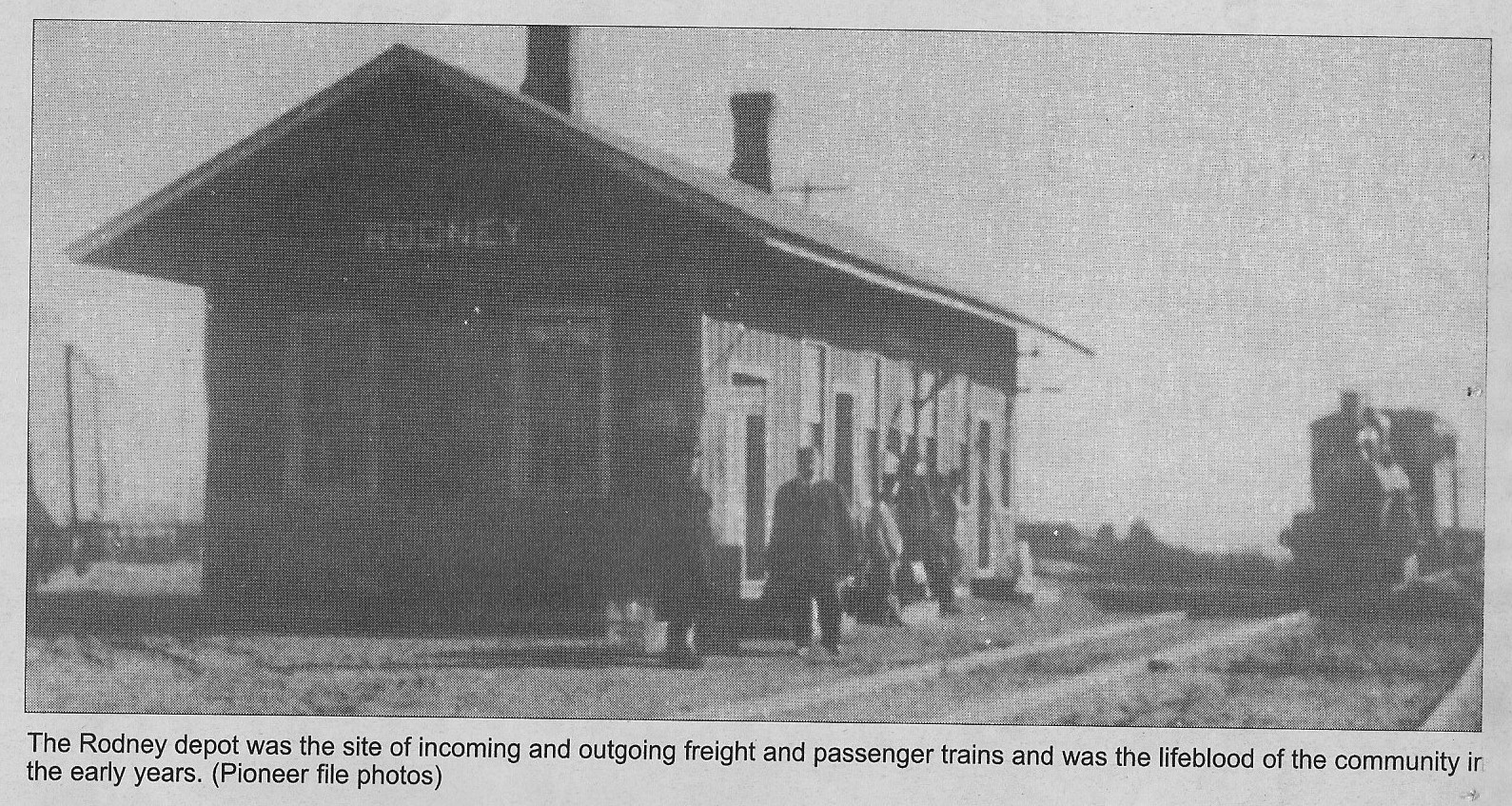
Part III - Culture, a supplement to the Big Rapids Pioneer Newspaper. Used with permission.

LIFE TODAY WOULD HAVE AMAZED, BEWILDERED THOSE OF YESTERYEARS
By Jim Bruskotter, Managing Editor
Today's high tech society would be a source of amazement and/or bewilderment to people of earlier years.
Consider the plight of the people of Rodney as described in a history of that community written by Betty Godbold.
"There was no electric power in Rodney until the early 1930's" she wrote. "kerosene lamps and lanterns were used for light. The elevator used a 25 horsepower kerosene engine for power to run the mill".
She described another source of lighting used in the home of her fath-in-law, Ivon Godbold. The carbide light in that home were powered by "calcium carbide gas which was piped throughout the house. In each room were wall lamps with shades and gas mantels to be lighted..."
She said the house was built in 1916 with a full cemented basement, hardwood floors and plastered walls, but that "there was no running water indoors at that time.
There were no big supermarkets in the tiny town, or easy transportation to big cities for shopping.
"Most everything that was not raied in gardens or by farmers was brought in by rail and delivered to the stores in town." Godbold wrote, "Bread came each day from a Big Rapids bakery in big wooden boxes with handles. As it came into the depot, boys scrambled for the privilege of delivering it to the stores. A boy could earn five cents per box. Papers also came in the mail where a paper boy picked up hs order and delivered the papers to the customers."
The railroad that bisects this Colfax Township community really was the life blood for early residents of Rodney.
"Cattle buyers came two or three times a year to purchase cattle in the area," according to Godbold's history. "They were shipped out from Rodney to markets in cities such as Detroit or Lansing." And the same was true for agricultural products raised by area farmers, pickles, beans and others.
And the trains served as people movers , too. "The railroad also at times carried families and their belongings as they moved in or out of town," she said.
Before the days if refrigerators, people in Rodney and most everywhere else had to depend ice cut from lakes in the winter and stored in ice houses for distribution throughout the year.
Godbold said the ice house in Rodney was in the south end of town. "Ice was cut in winters from Clear Lake or Horsehead Lake and stored in large pieces in sawdust for insulation," she said. "If a homeowner was fortunate enough to own an icebox, he could purchase a piece of ice for 25 cents."
Today Rodney area residents are protected from the threat of fire by large fire trucks based in their own fire barn near the Colfax Township Hall.
But in earlier times the people had to depend on "bucket brigades" as "about the only hope of putting out a fire."
The community took a giant step forward i 1930 when Ivon Godbold purchased a hand-drawn cart which was kept in the basement of his home in the winter to keep it from freezing. "In the summer, it was in a shed on the elevator property," Betty Goldbold wrote. "This cart held a 50 gallon tank which was filled with water and soda. In a top contained was sulfuric acid. When this was tipped over it mixed with the soda and water caused pressure to push out the stream of water."
The cart is now on display at the Big Rapids Department of Public Safety after the historic piece of fire-fighting equipment was donated by the Godbolds.
Social and recreational activities of earlier times were more limited, as well. Godbold said the community had its own "town band" in the early 1900's whose members "dressed in uniforms and played for special events.
Return to Mecosta sesquicentennial Page
Return to Home Page


